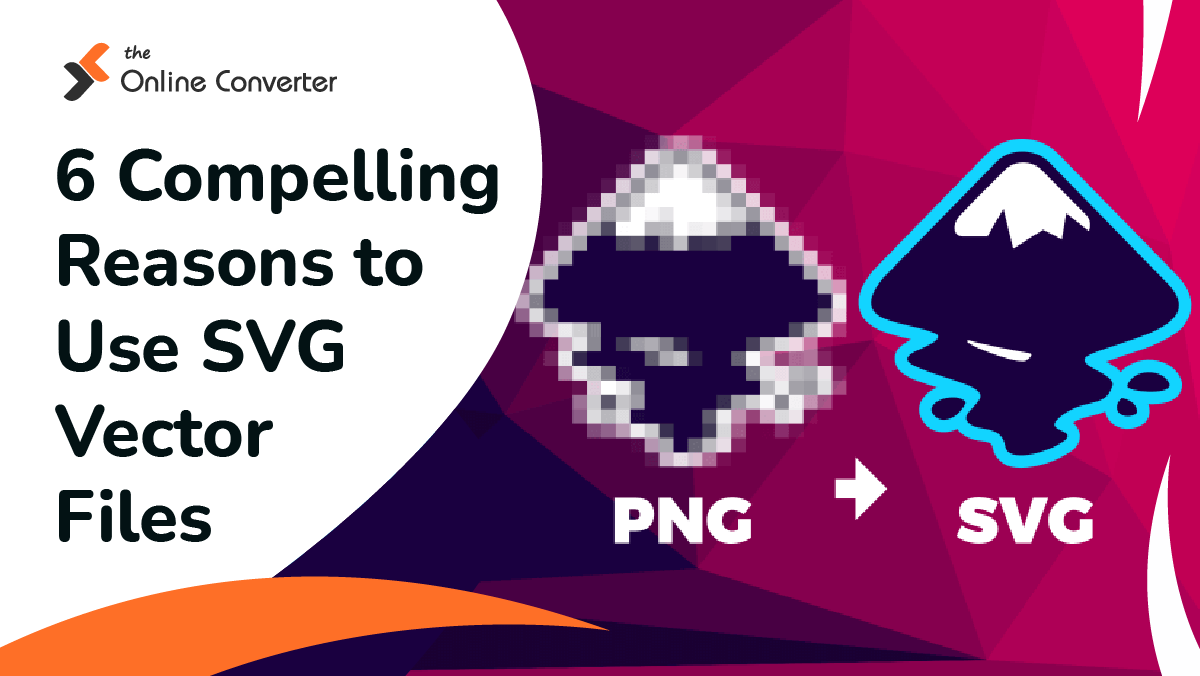
6 Compelling Reasons to Use SVG Vector Files
Whenever you are going to use images to your site, there are two main image types to choose from:
- Raster Images
- Vector Images
A raster image type is typically used for a photograph, it is packed with pixels and has a pre-defined resolution. When you scaled up raster images, they obviously lose quality and even can appear grainy or pixelated.
On the other hand, a vector is created by using certain points, lines, and shapes. The best thing about vector graphic files is that they can scale to any size without losing quality. Moreover, vectors images are limited in how much detail they can represent for artwork. That’s the most obvious reason why vector images are used for elements such as logos, icons, typography, or illustrations. However, vector images need to be used for responsive website design. And, SVG is referred to as the best option for any vector artwork that you’re going to use on your website. And, you could use the best SVG converter by theonlineconverter.com to perform convert files to and from SVG vector format for free.
Here we decided to mention a few benefits why you need to consider SVG vector files for your artwork. But, first, let’s clear some basics.
What is SVG?
SVG is an acronym for (Scalable Vector Graphics), it is a vector format that lets you display vector artwork files on your website. It is indicated as a great choice for responsive web design since you could scale an SVG image up and down as required without distorting any quality. That’s why we designed an online SVG converter from which you get SVG file conversions without distorting your vector file.
Reasons to Use SVG Files:
Keep Scrolling Down!
Scalability:
The most obvious benefits of using SVG vector graphic files are that they are resolution-independent. Unlike like raster images such JPEG or PNG, SVG’s will retain the same quality no matter at all whatever the screen size or resolution they’re being at. However, JPG regular images look blurry on a retina display, but thanks to the SVG vector trait that still look in high- quality.
File size:
Bear in mind that using SVG graphic files can lead to smaller file sizes than raster files when optimized properly. This works best when you’re going to deal with high-resolution screens as SVG vector images do not require to be created at larger sizes to accommodate the difference as other image formats do. Smaller image file sizes indicate that your images will load faster, so stick with SVGs for a responsive site.
Editing Capabilities:
Yes, you can be able to edit your SVG files by using graphic editing programs like Sketch or Illustrator. Also, SVGs can be edited in a text editor where the markup can adjust directly.
Performance:
Experts depicted that the inline SVG method greatly improves the site performance as it entirely eliminates the HTTP request that needs to load in an image file. Since there’s no needs to download files, this lead-in smaller loading times for a particular page. With this, the site appears faster to your visitors and even improves the user experience.
Style control:
Moreover, the inline SVG method assists you in controlling the styles within your image. You could now easily control the properties including stroke color, fill color, sizing, and much through using CSS. This is specifically best for eliminating the need for image sprites and even adding hover effects to an image.
Advanced options:
SVG (Scalable Vector Graphics) files become more dynamic than raster images as it can be manipulated with technologies like Javascript. For instance, SVG vector animation is referred to as a well-known technique for quickly adding interest and interactivity to a site.













































